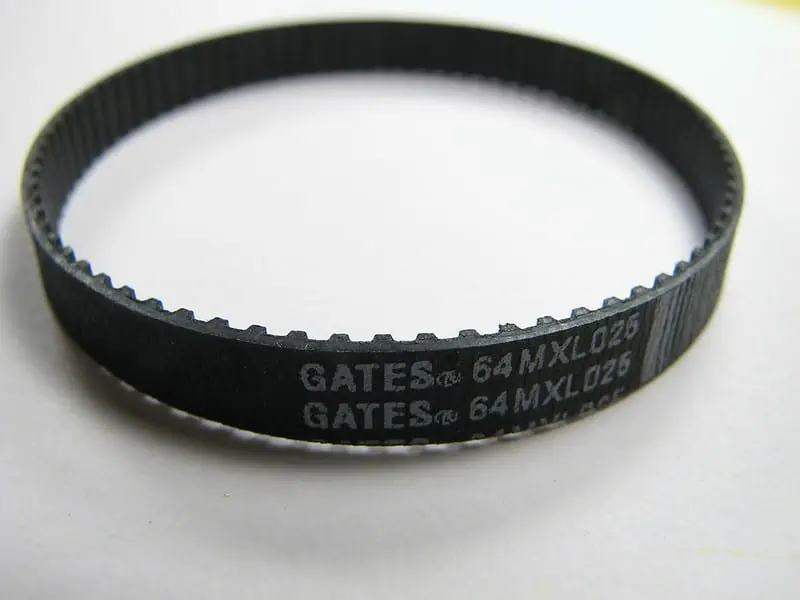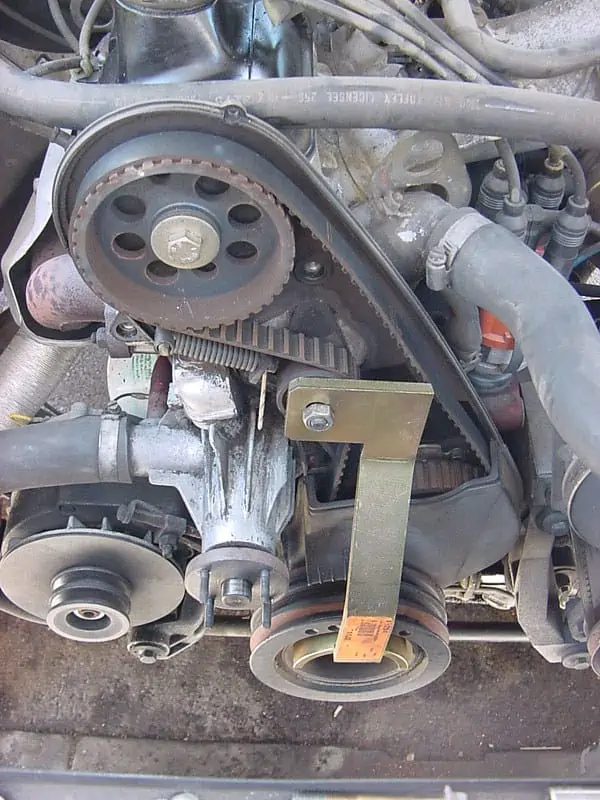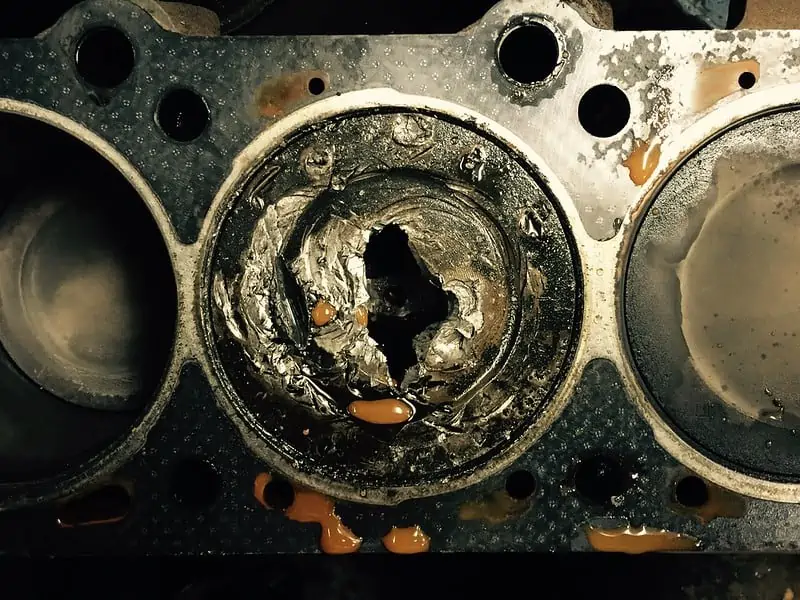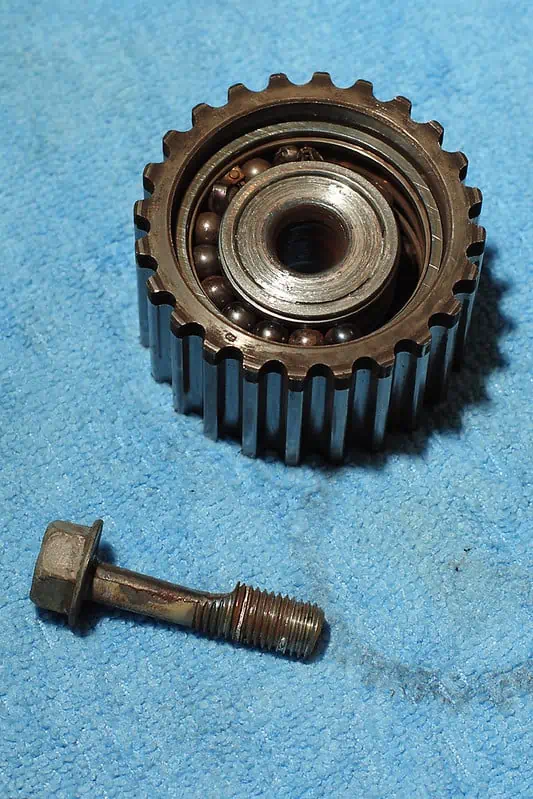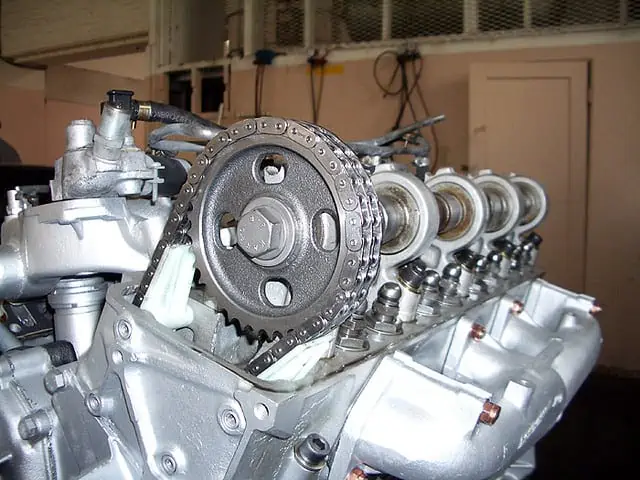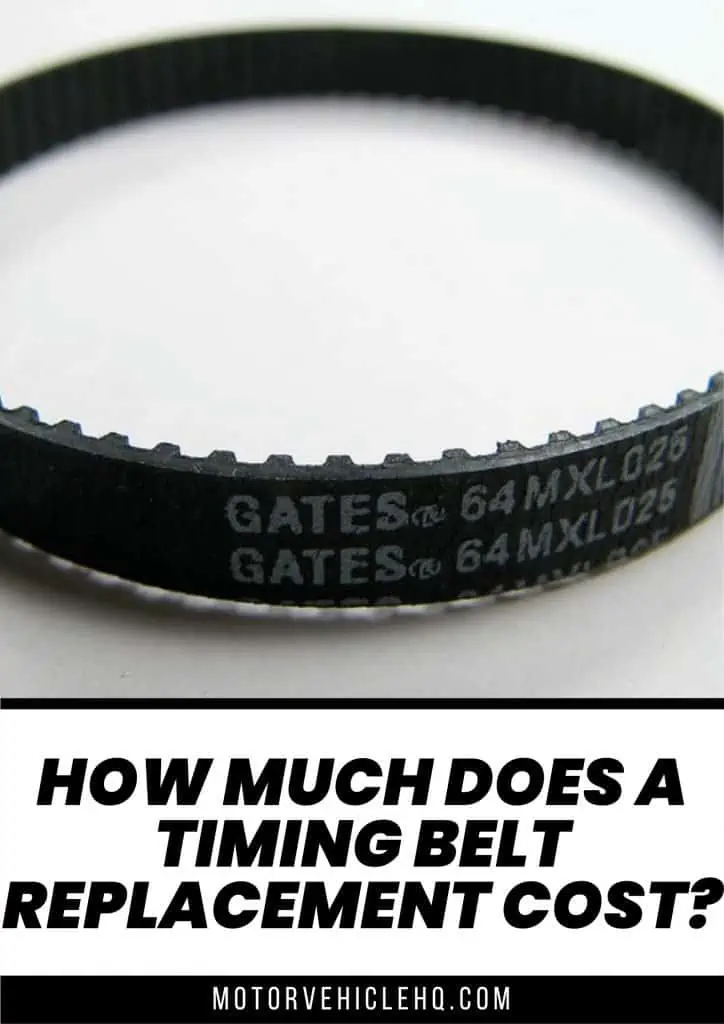Timing belts are frequently near the top of the list when key engine components are mentioned as they are responsible for synchronizing the movement of various engine parts to keep everything running smoothly. In other words, they are responsible for preventing the valves in your vehicle’s engine from opening and closing at the wrong times. This is accomplished by ensuring that the engine receives the proper amount of air to function optimally. They also help to prevent damage by keeping the pistons from colliding with the valves and other engine components. As a result, thorough maintenance is critical for ensuring the reliability of your engine and avoiding costly repairs down the line.
A timing belt is a cylindrical band that helps to connect the crankshaft and camshafts, and it helps to smooth out the engine’s power delivery. It is made from rubber or fabric and is strong enough to withstand the high temperatures generated by your engine. It is located under the hood of your vehicle and is used to transfer the power from the engine to the wheels.
Timing Belt Replacement Cost
A timing belt by Windell Oskay / CC BY 2.0
Timing belts are among the most expensive engine components to replace, not because they are costly in and of themselves but because of the time and labor involved. The engine needs to be disassembled to gain access to the timing belt. This requires a significant amount of time and work. In addition, replacing the timing belt involves resetting the timing and reassembling the engine.
A timing belt replacement costs between $300 and $1000 on average (this includes larger cars, trucks, and SUVs). The new timing belt is reasonably priced, ranging between $25 and $50. The expense of labor, on the other hand, is what makes this repair so costly. Replacing a timing belt is a time-consuming task that can take up to four hours.
How Does a Timing Belt Work?
Timing belt fitted round a pulley by Ben Der Gabelschwanz Teufel / CC BY-NC 2.0. The camshaft and crankshaft are kept in sync by the timing belt. This happens every two crankshaft rotations in a four-stroke, four-cylinder engine.
A timing belt is driven by a hydraulic pump connected to the crankshaft by a belt tensioner. The belt rotates the camshafts and controls the opening and closing of the valves in an engine as it moves. Timing belts are critical for maintaining efficient operation and longevity of the engine. If your timing belt breaks while you are driving, it can cause the engine to seize and stop running. Some engines incorporate an automatic belt tensioner that keeps the belt tight and smooth, while others may require you to manually adjust the tension periodically. Most vehicles use timing belts that are made of nylon material, but certain manufacturers still use cotton belts. These materials can wear out over time, and it is not uncommon for the timing belt to break after several years.
Once the belt starts to wear down, it may slip out of place and cause damage.
Symptoms of a Bad Timing Belt
A timing belt in a car is meant to function at extremely high temperatures, which is why it might wear out after several years of use. While there are no telltale signs that your timing belt needs to be replaced, there are some indicators that it may be time. Here are a few warning signs to look for:
1. Engine Misfire
If your car struggles to start or misfires when you speed, it could be due to a malfunctioning timing belt. This usually happens because the belt has fallen out of place and is no longer rotating adequately.
The engine misfires because one of the cylinders opens and closes too quickly as a result of the belt slipping away from the gears and onto the camshaft. The engine may not start if the belt completely slips off the camshaft and rubs against the pistons.
2. Abnormal Sounds From the Engine
If a timing belt starts slipping out of position, you will hear unusual sounds coming from your engine. Often this is accompanied by a loud clunking noise when turning the car on or a rattling sound while driving. Sometimes, this noise stems from a noisy idler pulley/tensioner. A timing belt maintains tension on the belt with idler pulleys and a tensioner, which allows the belt to remain in proper alignment.
These components are typically sealed bearings, which cannot be lubricated and become noisy as they wear out. In some cases, you may hear squealing or grinding noises from the engine as it becomes less effective.
If the timing belt snaps while the engine is operating, some engine components may become dislodged as well.
3. Engine overheating
Most engines rely on coolant to keep cool at all times. The cooling system is responsible for circulating the fluid throughout the engine and keeping it at the right temperature at all times.
An overheating engine by Todd Huffman / CC BY 2.0. If your vehicle is overheating, pull over, turn off the engine, and wait for at least 30 minutes for it to cool down.
If the timing belt breaks, the water pump will not be able to circulate enough coolant to keep the engine cool. As a result, the engine will overheat and smoke as well.
4. Strange Smells from Your Car
A bad timing belt can cause a noticeable odor in your engine compartment. If you detect an acrid smell emanating from your car after you turn the key, it is likely the result of a broken timing belt. In most cases, the belt will break near the valves, which allows the oil to leak out and causes a burning smell to develop.
5. An Engine Stalling or Dead at the Stop Light
Another common problem caused by a failed timing belt is an engine stalling or dying when it is stopped at a traffic light. Usually, this happens because the timing belt has come loose from one of its pulleys or has broken entirely. When the belt breaks, the camshaft and the crankshaft no longer mesh together, and the engine stops running.
6. Oil leak
A leaky oil seal is one of the most prevalent indications of a malfunctioning timing belt.
Oil leak by Robert Couse-Baker / CC BY 2.0. If left unchecked, an oil leak can cause seals or rubber hoses to deteriorate rapidly. Furthermore, oil leaks are a fire hazard and might cause your car to fail unexpectedly.
As the belt becomes loose over time, the oil seal begins to break, allowing oil to seep into the engine block beneath it. Furthermore, if the timing belt snaps fully, the valve covers will become removed, causing engine oil to flow everywhere.
7. Excessive smoke from the exhaust
Smoke coming from the exhaust of your car is usually an indication that there is a problem with the engine. When the timing belt fails, the engine can seize, causing the pistons to tear through the piston rings and causing excessive smoke to billow from the exhaust. Furthermore, the top of an engine cylinder has two holes responsible for discharging emissions and allowing air in. These holes open and close in sync with the movement of the cylinders and the rotation of the camshaft. If your timing belt is worn out, it will become unsynchronized, allowing exhaust to escape and air to enter at ill-timed periods. As a consequence, your exhaust system will emit a lot of smoke.
8. Broken pistons or valves
When the timing system in your car becomes misaligned, it will lead to a lot of problems such as a broken piston or a valve being torn off the engine block.
A broken piston by Todd Lappin / CC BY-NC 2.0
When the timing belt becomes loose, it can cause friction between the belt and the gears, which can lead to the breakage of these components. As a result, the engine will experience serious damage and may stop working altogether.
9. Rough idle
If your timing belt fails while you are driving, you may notice that your car has an inconsistent idle or turns over more slowly than usual. This usually means that your engine has lost power and is no longer performing as it should. Timing belts have teeth that grasp gears when spinning various engine parts and components. If these teeth get worn or brittle, the timing belt will begin to slip away from the gears.
When this happens, the teeth will fall squarely into the gears, causing the engine to stall due to poor camshaft timing.
10. Erratic Gear Shifts
If your timing belt starts to slip, you may notice that your gear shifts have become erratic. For example, shifting into reverse or changing gears while driving may require more work than usual. This is a sign that the timing belt may have broken and is no longer functioning correctly.
What causes a Timing Belt to break?
There are a few things that cause a timing belt to break. They include:
1. Wear and Tear
Over time, the belt loses its tension and begins to wear down. It can become misshapen and may slip out of place easily. However, the most probable cause of a worn timing belt is actually improper maintenance by the owner. For example, you should never drive your car while it is under repair because it can put extra strain on the timing belt and lead to premature failure. It is critical to service your engine and inspect the various components regularly so that any problems with the timing belt may be recognized early and fixed before they cause any damage to the vehicle.
2. Debris in the Timing Pulley
Debris in the timing pulley can create a variety of issues that are directly tied to a broken timing belt ruining your engine. Dirt on the timing belt teeth can cause the belt to abrade, and oil can also attack and corrode the belt materials. To remove the debris and oil, clean the rust and grime off the timing belt with a sharp brush. To avoid a broken timing belt, ensure that all oil and grease are removed. Any of the aforementioned reasons can be attributed to debris, meaning that the timing belt must be cleaned to prevent engine damage.
3. Lack of Proper Maintenance:
Like most mechanical components of your vehicle, your timing belt requires regular maintenance to perform effectively and avoid damage. This means that it should be inspected periodically to identify any problems that could lead to premature failure and ensure that it remains in good condition. If you fail to perform regular maintenance, the chances of your timing belt breaking increase significantly, and you could be faced with costly repairs that could have been avoided if you had simply taken the time to have the car serviced by a professional.
4. Excessive Load
If the timing belt teeth are shearing and wearing down over time, the source of the shearing and belt deterioration is most likely high load. Severe load, shock loads, and other factors can induce tensile failure and excessive tooth wear. To fix this typical timing belt problem, you must rebuild the drive to avoid the belt from killing your engine.
Excessive load can be generated by too much weight, debris in the drive system, or a damaged pulley that has resulted in a broken timing belt. To resolve this issue, verify the horsepower rating and modify the belt drive.
5. Improper Installation
Another common cause of a malfunctioning timing belt is poor installation during the vehicle’s initial assembly. A damaged timing belt can be caused by a straight cord line rupture, which means the belt was crimped before being installed in the system. It can also occur when the raffled cord line ruptures, in which foreign objects introduced between the belt and the pulley can break the tensile cord and create worn pulleys.
A timing belt idler pulley by Nathanael Coyne / CC BY-NC-ND 2.0
Worn timing pulleys can significantly lower the life and lifespan of the belt and possibly damage the engine. Furthermore, the belt can be twisted or turned inside out before being fitted onto the pulley, resulting in a worn pulley and a broken timing belt that destroys the engine.
How long does a timing belt last?
Most timing belts will last somewhere between 60,000 and 100,000 miles before they have to be replaced. The exact number will depend on the specific make and model of your vehicle as well as the conditions under which you drive it. However, some belts may need to be replaced as early as 40,000 miles. This is because elements such as heat, vibration, and oil contamination can reduce the longevity of a timing belt.
Another issue that reduces longevity is timing belt stretch. If the timing belt is not replaced at the appropriate intervals, it may extend. This will make the vehicle more difficult to start and limit engine performance.
To avoid this, keep your vehicle maintained according to the manufacturer’s recommendations and have your timing belt serviced by a trained mechanic. This will guarantee that it continues to function efficiently for as long as possible and will help to avoid future unexpected and costly breakdowns.
Timing Belts vs Timing Chains
Timing chain by Matt / CC BY 2.0. The most significant distinction between a timing chain and a timing belt is noise and life expectancy. A chain is usually maintenance-free, however, a timing belt must be replaced at a predetermined interval.
A timing chain is a metal chain that connects the crankshaft to the camshaft, ensuring that these components are in rhythm. A timing belt is a rubber belt that serves the same purpose as a timing chain. Timing chains are typically more durable and cheaper to maintain; nevertheless, they are also expensive.
Timing belts are more efficient and effective in some engine designs, but they must be replaced more frequently. Finally, the engine designer must decide which form of system is suitable for a particular application.
Is driving with a loose timing belt safe?
A defective timing belt by Pete / CC BY 2.0. If your vehicle timing belt breaks while driving, stop, turn off your engine and call a mechanic.
The answer is no because doing so might cause your engine to misfire, resulting in engine damage and unsafe road conditions.
The timing belt keeps the top and bottom parts of your engine in sync. If it snaps, the pistons and valves could collide. This will severely harm your engine and necessitate an engine rebuild.
Do not drive your automobile if you suspect your timing belt is loose. Tow it to a certified mechanic as soon as possible. Driving with a faulty timing belt is unsafe and may result in terrible consequences.
Can you replace a broken timing belt yourself?
The answer is no. Timing belt replacement requires the use of specific tools, as well as knowledge of how the engine works, thus it is best left to skilled mechanics. This is because if the timing belt is not replaced correctly, it can cause severe engine damage.
Before attempting to change the timing belt yourself, it is also a good idea to get the engine checked by a specialist. Several engine attachments, such as the power steering pump, pulley bearing, idler pulleys, and water pump, may need to be removed.
Conclusion
Based on the information gathered in this article, it can be said that timing belt replacement is not a cheap procedure. There are, however, certain things you may do to cut these expenditures. The first step is to locate a mechanic who offers repair cost discounts. The second option is to source any additional parts on your own. This would save you money as you will not have to pay a mechanic to get these parts for the repair. Finally, compare prices on all belt replacement parts. To avoid replacing your timing belt before its expiration date, you must maintain your car adequately.
Additionally, it is often advised to replace the water pump and timing belt simultaneously since they are in a similar location. It may be more expensive for a new water pump, but you will save a lot of money on labor costs than if you were to do it later.
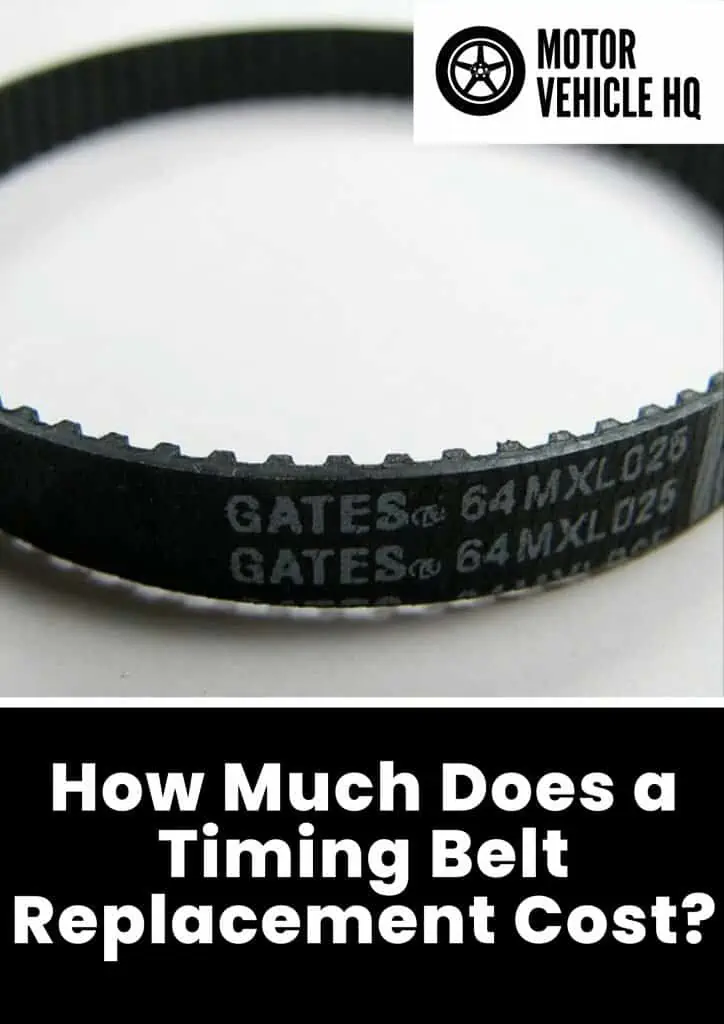

Jim Wicks is the founder of MotorVehicleHQ. With over two decades of experience in the automotive industry and a degree in Automotive Technology, Jim is a certified car expert who has worked in various roles ranging from a mechanic, car dealership manager, to a racing car driver. He has owned more than 20 cars over the past 15 years. Ask him about any vehicle you see on the road and he can tell you the make, model and year. He loves the aesthetics of all things cars, and keeps his vehicles in pristine condition.
In his free time, Jim enjoys getting his hands dirty under the hood of a classic car or taking long drives along the country roads. His favorite car? A 1967 Shelby GT500, a true classic that, according to Jim, “represents the pure essence of American muscle.”
